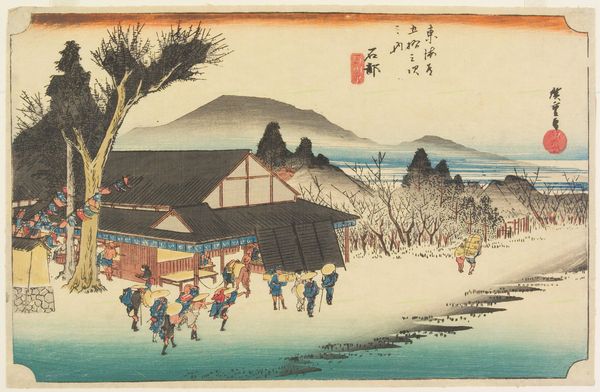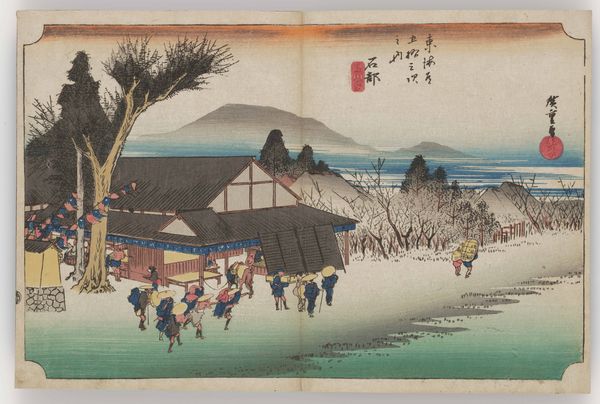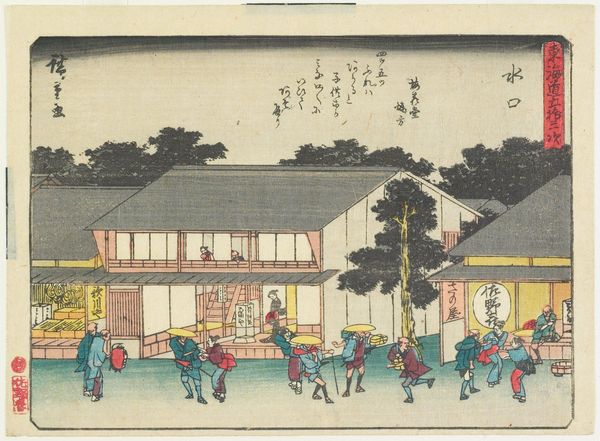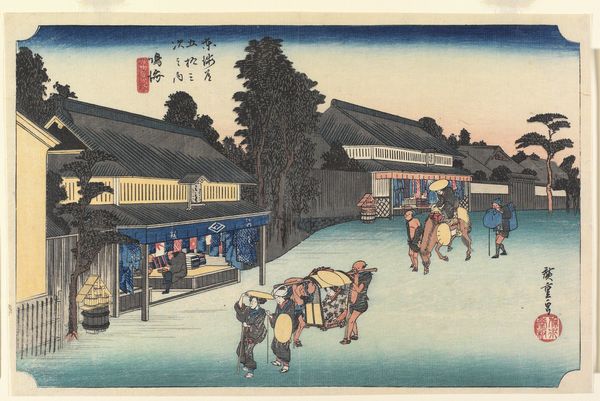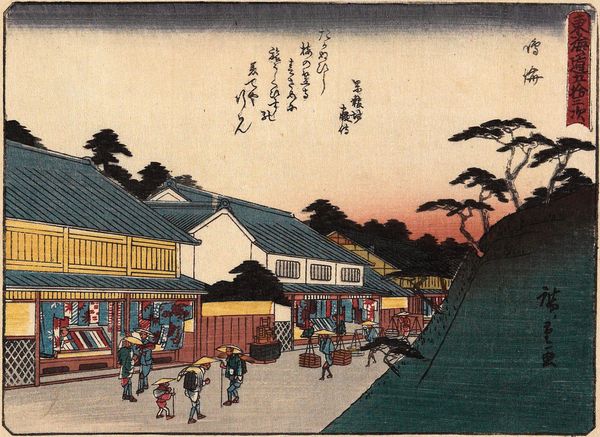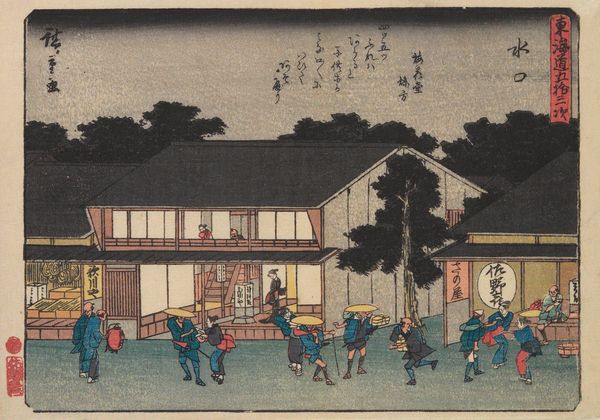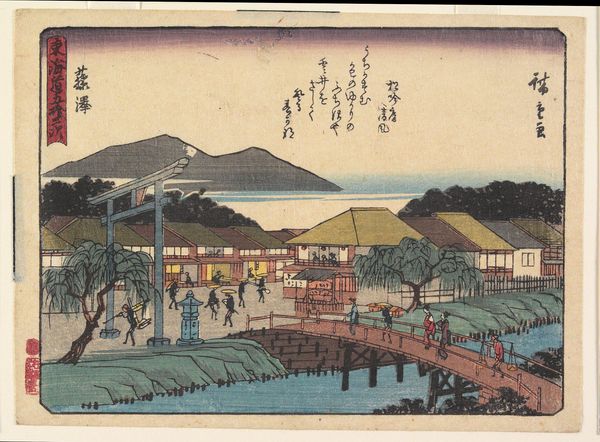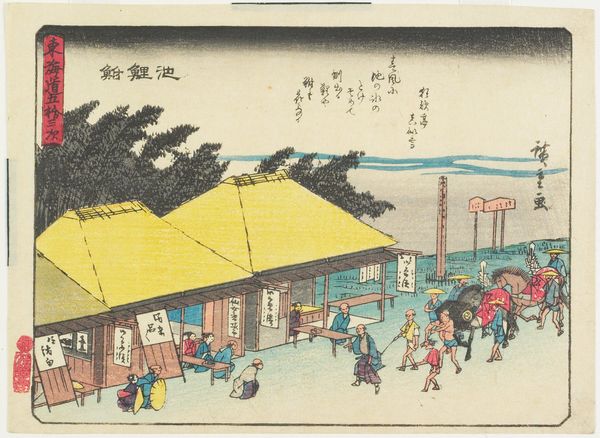
print, paper, ink, woodblock-print
#
narrative-art
# print
#
asian-art
#
landscape
#
ukiyo-e
#
paper
#
ink
#
woodblock-print
Dimensions: 8 7/8 × 13 7/8 in. (22.5 × 35.2 cm) (image, sheet, horizontal ōban)
Copyright: Public Domain
Curator: This is "Ishibe," a woodblock print created by Utagawa Hiroshige around 1832 or 1833. It now resides at the Minneapolis Institute of Art. Editor: It's stunning. The colours, especially that bold red sun, draw you in, but there’s an undercurrent of somber reflection. Like a quiet sigh after a long journey. Curator: Exactly! Ishibe was a post station on the Tokaido road, one of the most important routes in Edo-period Japan. This image comes from a series called "Fifty-three Stations of the Tokaido." Editor: Fifty-three stations, fifty-three stories of transit, labor, and societal connection. Looking at the travelers gathered around the buildings... I wonder about their lives, what propelled them down the road. It really highlights the relationship between people and place, the way the road becomes this artery. Curator: Hiroshige was a master of capturing fleeting moments, the transience of life and the subtle moods of nature. The soft gradients in the sky, the bare trees… there is something very meditative. A hint of stillness. It whispers a personal tale rather than shouts a grand statement. Editor: Though what looks like stillness is deceptive, I think. The Ukiyo-e genre literally means 'pictures of the floating world,’ and this print perfectly embodies that sense of ephemerality and constant movement. Even the landscape seems to be actively shaped by human transit. We see people bending under the weight of their goods. They appear as nameless carriers within systems of trade. How is this labor gendered, raced? Who benefits? Curator: Always bringing the difficult questions to the fore, aren’t you? That’s essential! We can appreciate the beautiful design without losing sight of social structures. For me, it’s also about how the personal and universal blur. One sees the quiet dawn of their own journeys here too. Editor: Yes, the intersection of beauty and critical awareness. "Ishibe" invites a simultaneous contemplation of aesthetic form and power dynamics—of beauty but also injustice. It urges us to engage art and social theory, challenging historical narratives.
Comments
No comments
Be the first to comment and join the conversation on the ultimate creative platform.
